Garden Aviary Ideas: Transform Your Backyard into a Bird Paradise
Creating a garden aviary can add a magical touch to your outdoor space, offering a vibrant and interactive experience with nature. It not only enhances the beauty of your garden but also provides a safe and healthy environment for your feathered friends.
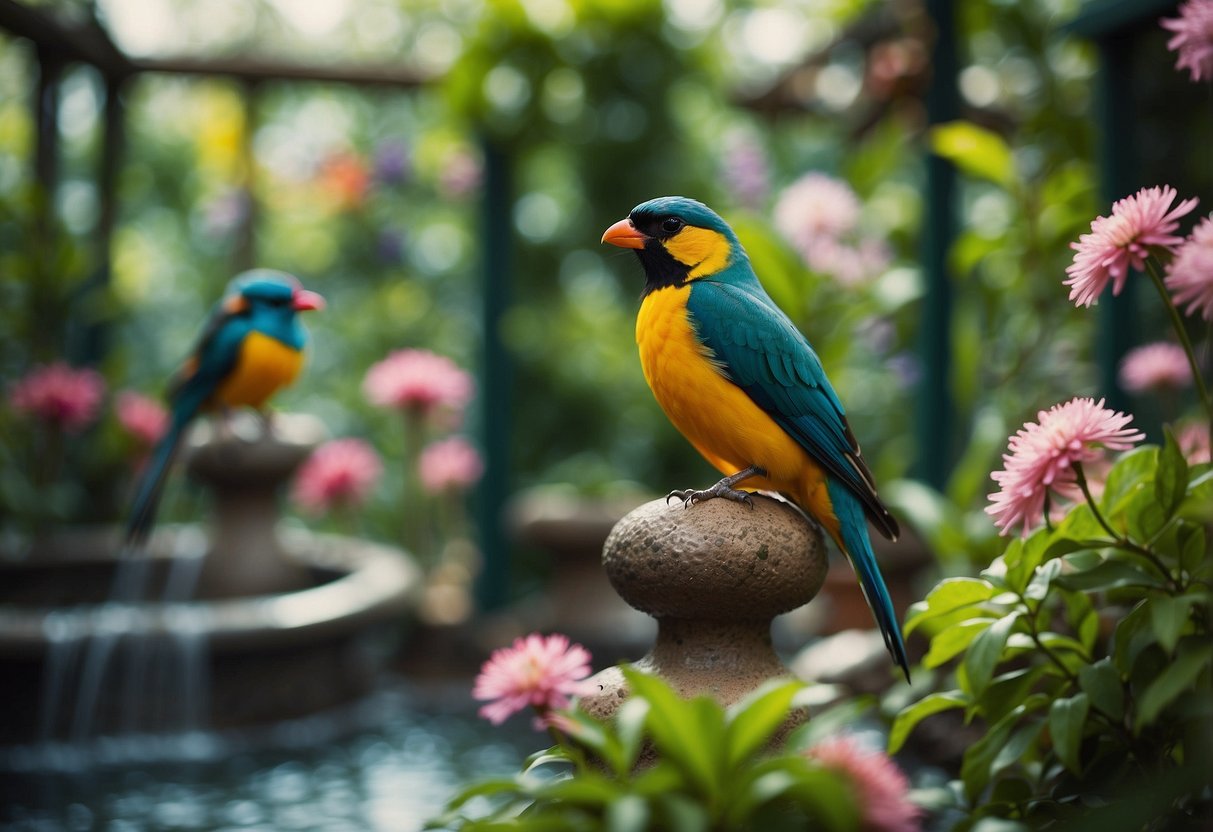
Wondering how to start designing your own garden aviary? There are countless ideas and plans available that cater to various preferences and budgets. By exploring these options, you can find the perfect solution that aligns with your vision and transforms your garden into a bird haven.
1) Butterfly Garden Aviary
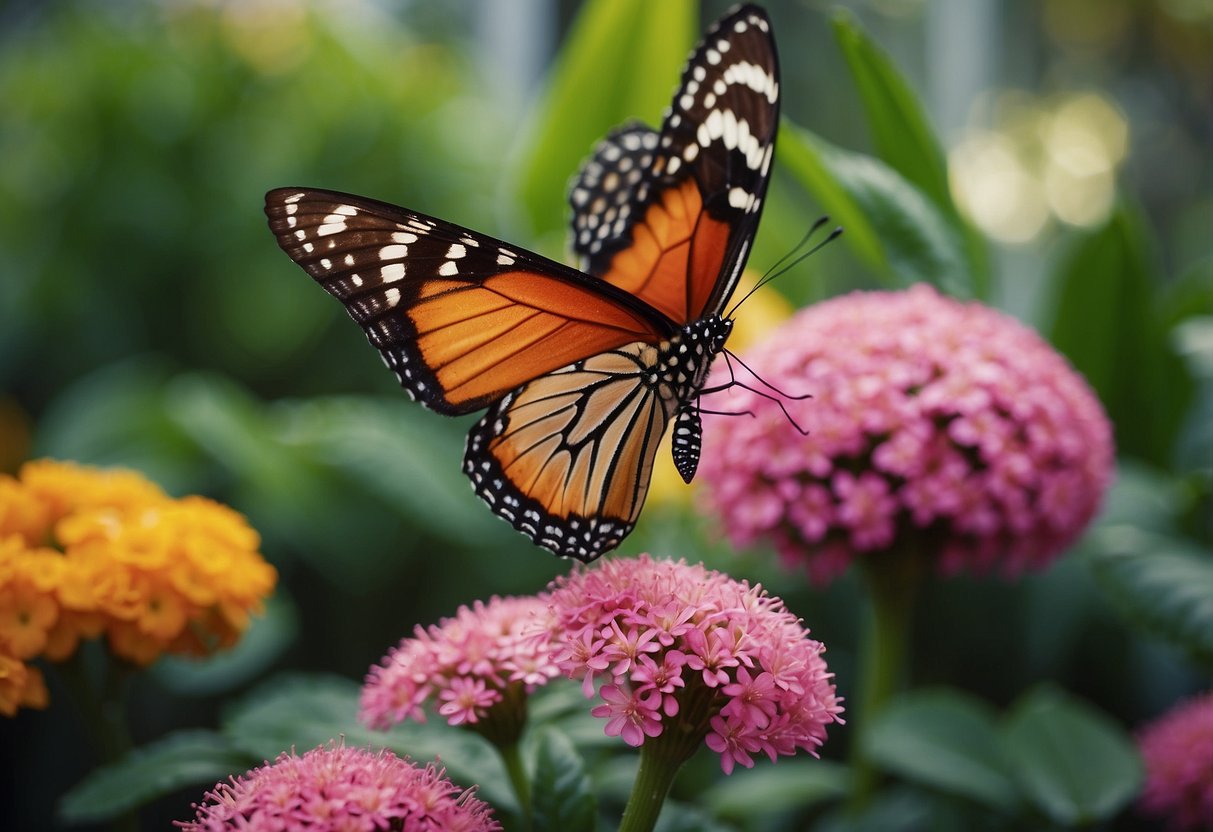
Creating a butterfly garden aviary in your backyard can be a fun and rewarding project. You can enjoy watching colorful butterflies and birds in a beautiful outdoor space.
Choose plants that attract butterflies and provide nectar. Some good options are coneflowers and milkweed.
Ensure your garden has sunny spots and places for butterflies to rest. This will create a welcoming environment for your winged visitors. For more ideas, check out these garden aviary inspirations.
2) Hummingbird Paradise

A Hummingbird Paradise starts with choosing the right spot in your garden. Hummingbirds need a mix of sun and shade areas to thrive.
Planting native flowering plants such as Tulip trees and coral bells will attract these tiny birds. They prefer nectar-rich flowers, so choose plants wisely.
Give them climbing vines and trellises to create vertical space. A few well-placed structures can make a big difference.
3) Zen Bird Sanctuary
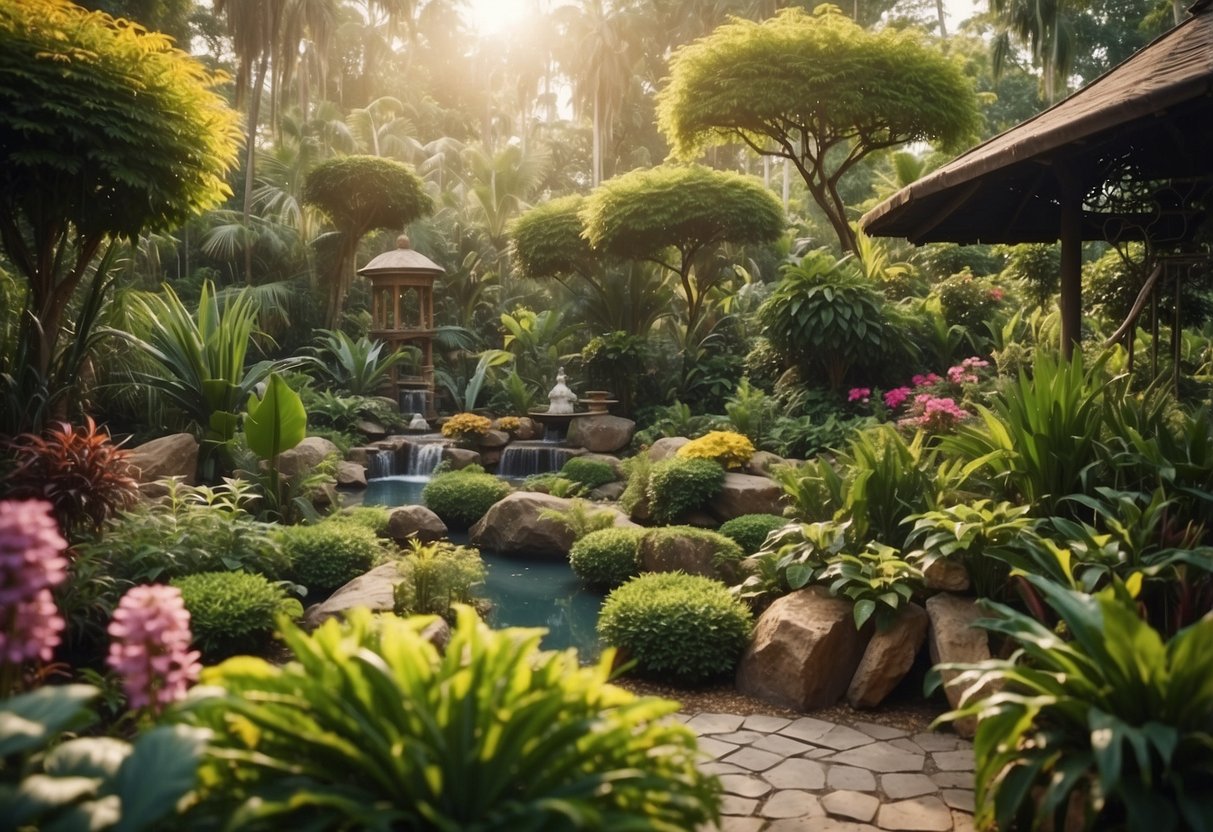
Creating a Zen Bird Sanctuary in your garden combines tranquility with nature.
First, choose soothing elements like raked gravel patterns and small water features. These help create a calming atmosphere for both you and the birds.
Add bamboo or stone accents to enhance the Zen feel. Plants like bonsai and Japanese maples can provide shade and natural beauty.
Include various perches and nesting spots for the birds. Place these in quiet areas to give the birds a sense of peace and security.
4) Fairy Tale Bird Haven
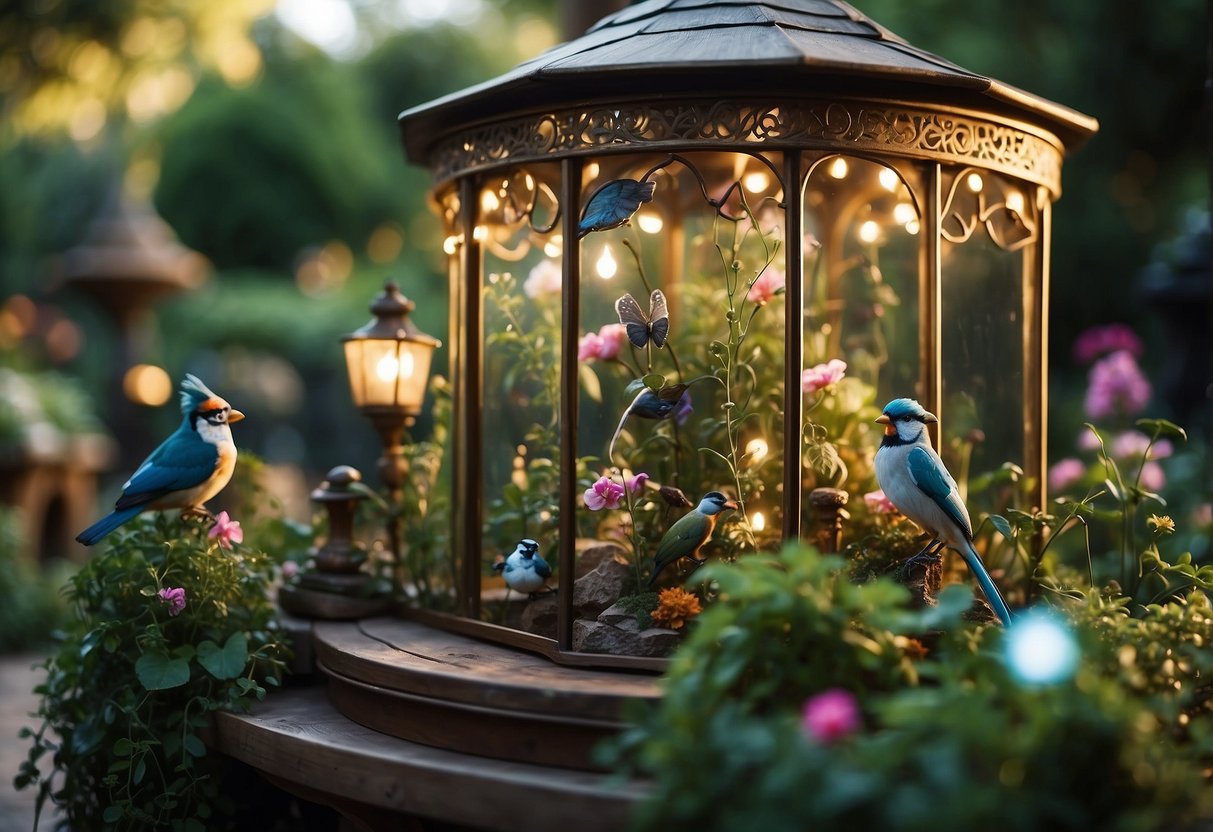
Create a magical space that makes both you and your birds happy.
Start by adding a charming birdhouse that looks like a tiny fairy cottage.
Include small plants and flowers around the birdhouse to give it a whimsical feel. Use miniature accessories like tiny benches or paths to complete the look. Make sure your bird haven provides food and water to keep your feathered friends coming back.
You can find more ideas on making a fairy tale garden at Pinterest.
5) Rustic Wooden Aviary
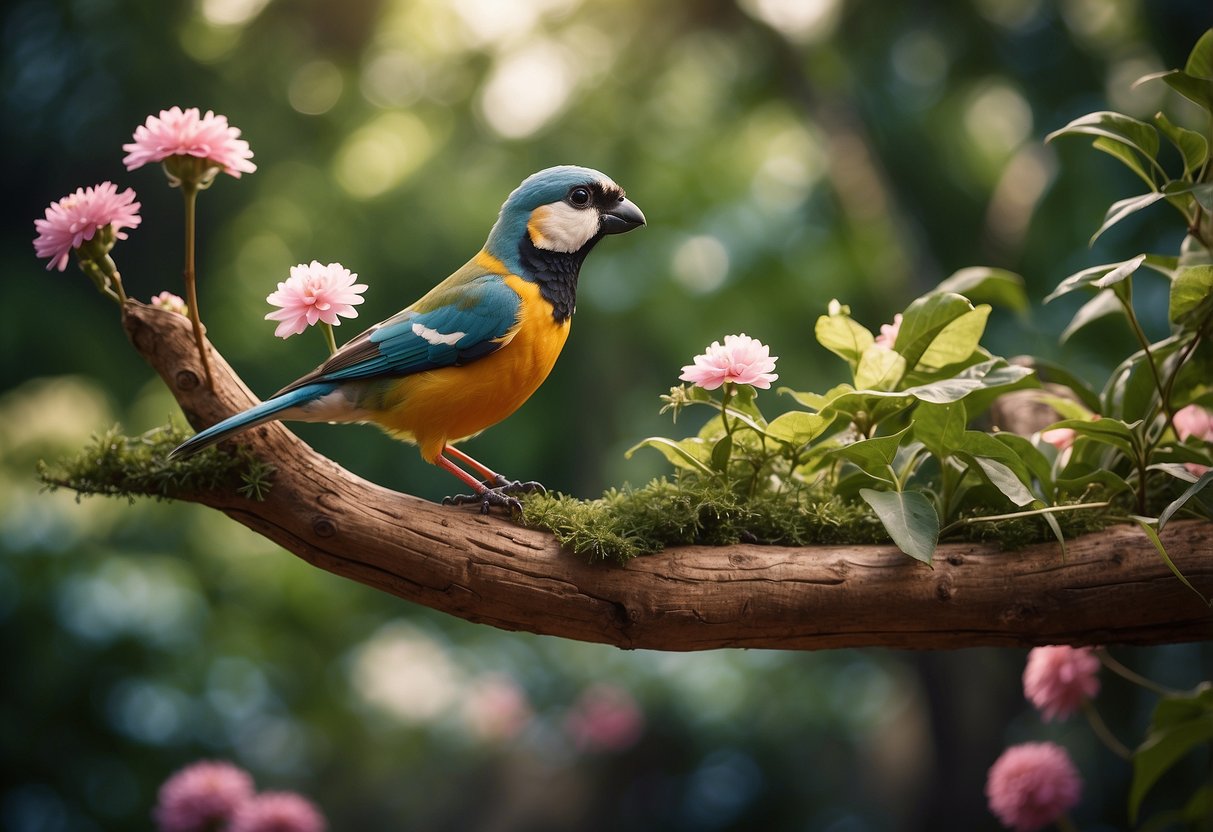
A rustic wooden aviary can add a charming touch to your garden. Using natural wood gives it a cozy and natural feel. You can create this aviary using 2×2 pieces of wood and wire mesh for the walls.
Make sure to choose weather-resistant wood to make your aviary last longer. Adding features like branches, wooden perches, and a small birdhouse will make the space more inviting for your birds. For more ideas, visit these walk-in bird aviary plans.
6) Victorian Style Aviary
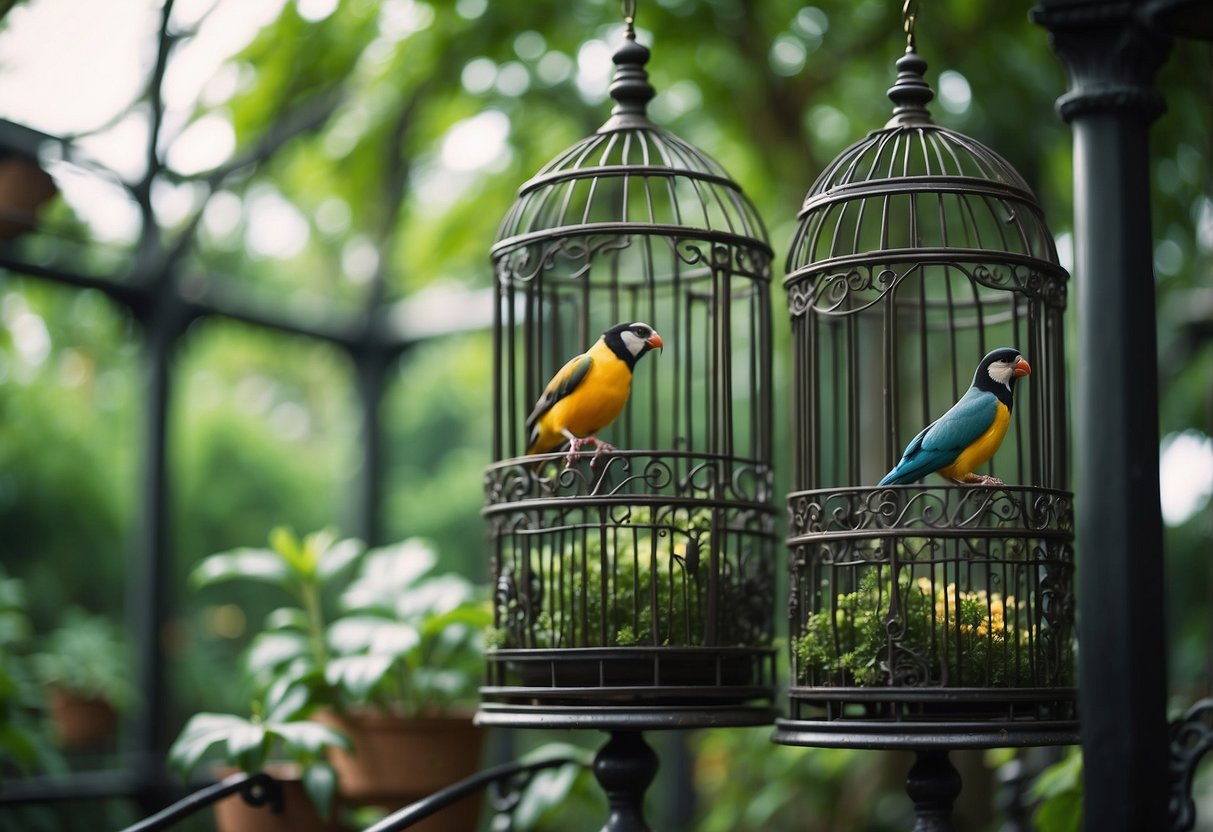
A Victorian style aviary adds a touch of elegance to your garden, making it a beautiful focal point.
Inspired by grand designs from the late Victorian period, these aviaries often feature intricate details and ornate structures.
You can use materials like wrought iron and glass to capture the classic look.
For ideas, check out these Elegant Victorian Aviary Ideas.
Designers Jonathan Denby and Philippa Pearson have also created stunning examples, like the one at Waddesdon Manor, blending history with modern touches.
7) Tropical Bird Oasis
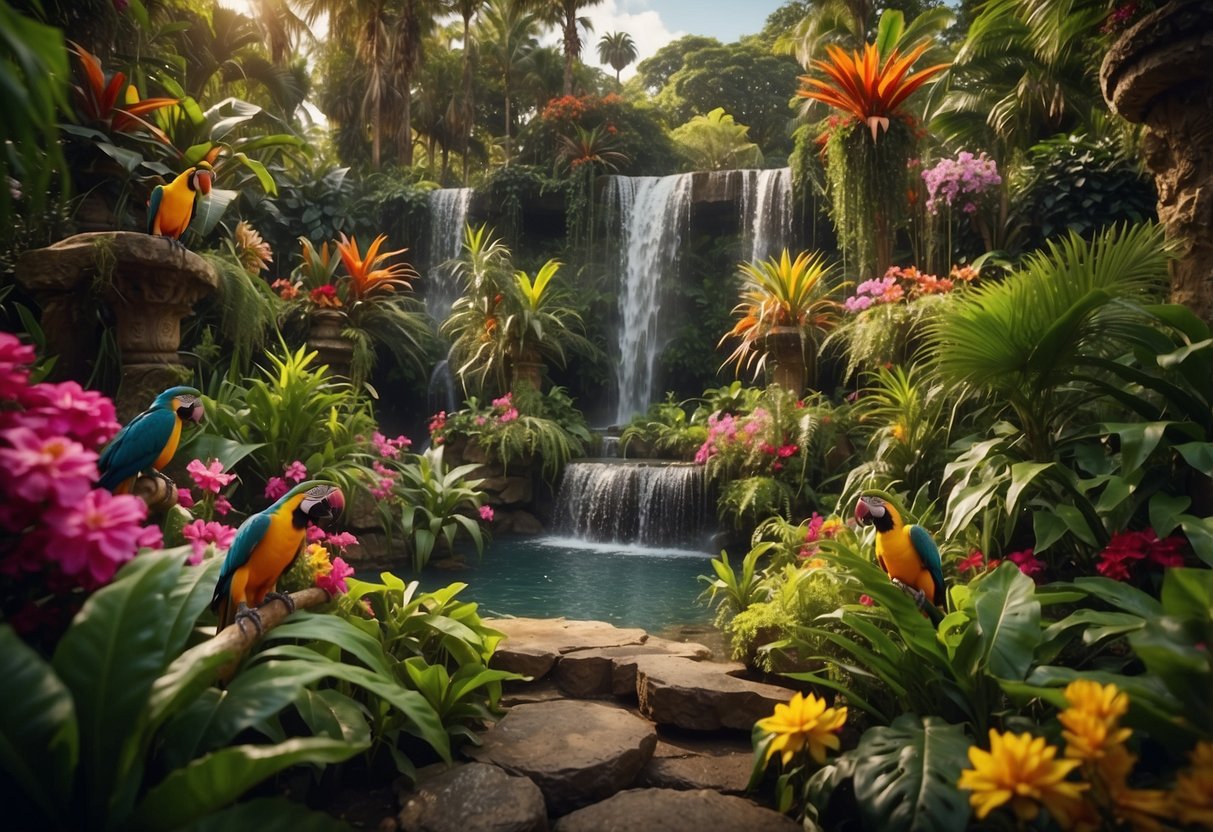
Create a lush environment for birds in your garden aviary. Use vibrant plants like banana leaves and towering ferns. They provide shade and attract colorful birds, adding life to your space.
Incorporate water features such as small ponds or fountains. Birds love to bathe and play in water, making your aviary even more attractive.
Try planting shrubs like Viburnum plicatum for their edible fruits that birds enjoy. This will ensure they love visiting or living in your tropical bird oasis.
8) English Cottage Aviary
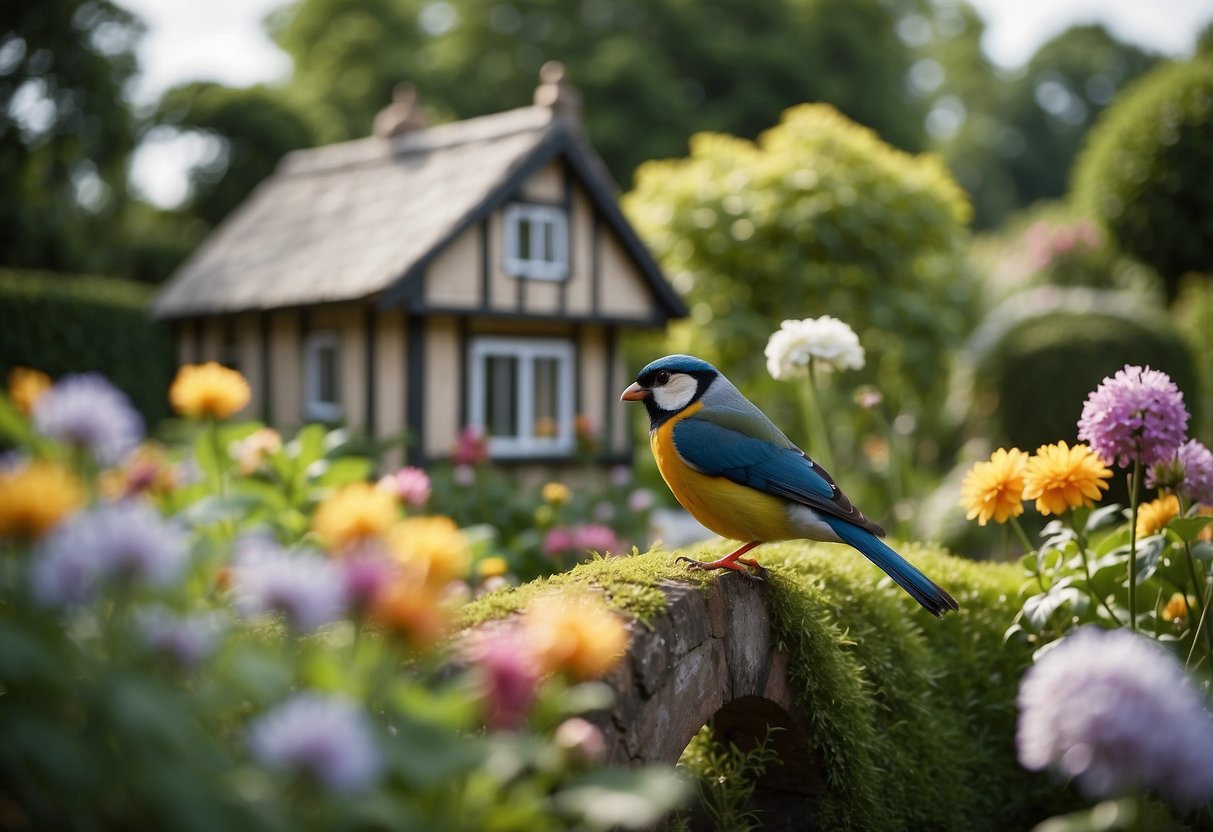
Imagine a sweet, picturesque setting in your garden. An English Cottage Aviary can bring that charm to life.
Use wooden beams and wire mesh to create a cozy, sturdy space for your birds. Decorate the outside with climbing roses and ivy to give it a rustic feel.
Inside, add a few small birdhouses and a variety of branches for perching. Consider planting fragrant herbs like lavender and mint. This will make the aviary smell wonderful and add to the quaint, cottage-like atmosphere.
Explore more garden aviary ideas.
9) Japanese Tea Garden Aviary

A Japanese Tea Garden aviary offers a peaceful and beautiful space for both birds and people.
First, use elements like rocks, sand, and water to create a calming scene. Add a small pond or waterfall to represent water.
Incorporate plants such as low-growing sedums, alpines, azaleas, and conifers. These plants look great all year round and fit the theme perfectly.
Keep bushes and shrubs pruned to allow air to circulate. Adding a few red or orange plants can represent fire and add some color to your garden.
10) Italian Villa Aviary
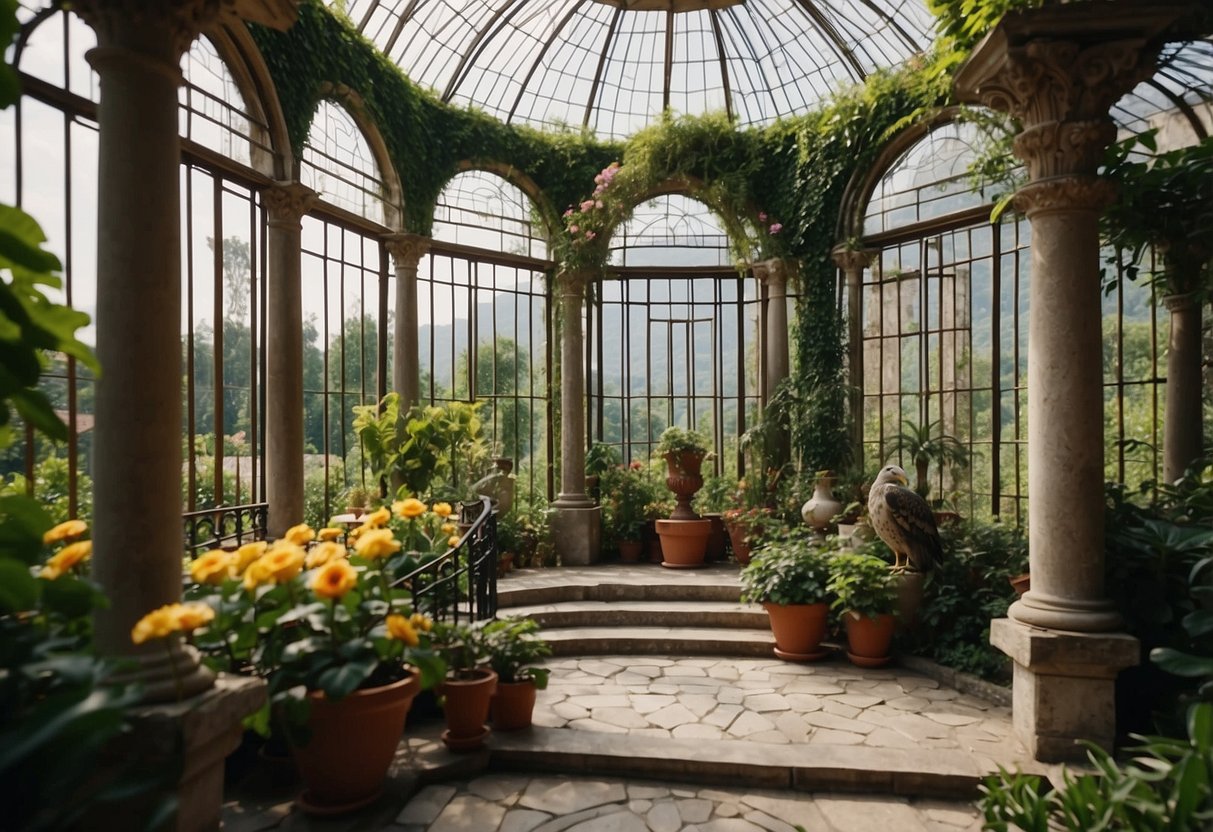
Transform your garden into a charming Italian villa with an aviary inspired by Mediterranean architecture. Use terracotta pots, stone walls, and lush greenery to create a serene and luxurious space.
Add climbing vines like ivy and grapes, which can both thrive in an aviary setting. Include small fountains or water features to bring a touch of elegance.
Incorporate wrought iron elements such as perches, feeders, and decorative gates. This will give your aviary an authentic Italian feel while providing your birds with a unique and enjoyable environment.
Designing Your Garden Aviary

When designing your garden aviary, focus on finding the best location, picking the right plants, and making a space that birds will love. These are the most important parts to make sure your aviary is safe and enjoyable for both you and your birds.
Choosing the Right Location
Selecting a location for your aviary is essential. Look for a sunny spot that provides some shade during the day. Avoid placing the aviary in areas prone to strong winds or heavy rain.
Think about accessibility for both you and your birds. You need to reach the aviary easily for feeding and cleaning. Birds need a place that’s safe from predators. A location near your house allows for better monitoring.
Lastly, consider noise levels. Birds can be scared by loud sounds. Placing the aviary away from busy streets or noisy neighbors helps create a calm and stable environment for your feathered friends.
Selecting Suitable Plants
Plants are vital for your garden aviary. They provide shelter, food, and a natural look. Choose native plants familiar to local birds. They adapt better to the climate and require less maintenance.
Good options include shrubs, small trees, and flowering plants. Shrubs offer hiding spots, while trees can provide nesting sites. Flowering plants, like coneflowers and sunflowers, attract insects that many birds feed on.
Avoid plants that are toxic to birds. Research and ensure your picks are safe. Incorporating a mix of plant heights and types creates a more dynamic and interesting space for both you and your birds to enjoy.
Creating a Bird-Friendly Environment
To make your aviary bird-friendly, ensure there are plenty of perches at varying heights. Different levels give birds the choice of where to rest or lookout.
Provide clean, freshwater. A small birdbath or shallow pond works well. Birds need to drink and bathe regularly, and this helps attract a variety of species.
Consider adding nesting boxes or natural materials like straw and twigs. These are useful for birds looking to build nests. Think about safety, too. Use mesh with small gaps to keep out predators while allowing birds to move freely.
Make sure the materials you use for the aviary’s structure are durable and non-toxic. Your goal is to create a space that is both enjoyable and safe for your birds.
Maintaining Your Garden Aviary

Keeping your garden aviary well-maintained ensures your birds stay healthy and happy. You’ll need to focus on feeding, cleaning, and grooming.
Feeding the Birds
To make sure your birds stay healthy, it’s important to give them the right food. Different birds have different needs. For example, finches and canaries require small seeds and fresh greens.
Feed Types:
- Seeds: Millet, sunflower seeds
- Fresh Food: Apples, broccoli
- Protein: Eggs, mealworms
Always provide fresh water. Change the water daily to prevent illness. Use bird feeders that are easy to clean and fill. Regularly check for moldy or stale food. Consistent feeding times help keep birds calm and less stressed.
Cleaning and Grooming
Your garden aviary needs regular cleaning to keep your birds healthy. Once a week, clean the floor and perches. Remove any droppings and old food. Using wire mesh can help keep the space tidy.
Cleaning Tips:
- Floor: Sweep or vacuum debris
- Perches and Toys: Use a non-toxic cleaner
- Water and Food Dishes: Wash daily
Grooming is also crucial. Trim your birds’ nails regularly to prevent overgrowth. Check for any signs of illness, such as loss of feathers or changes in behavior. Regularly spraying mist can help keep their feathers clean and healthy.
Seasonal Care Tips
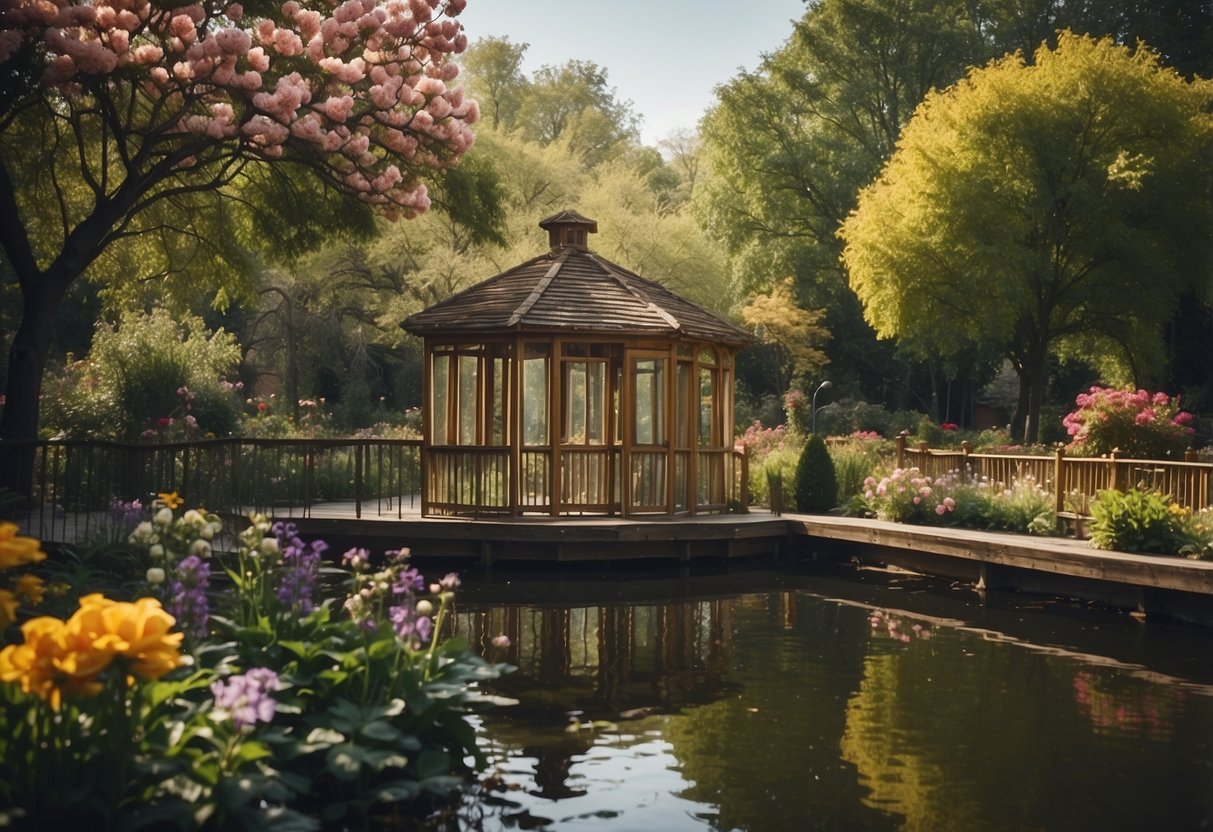
Taking care of your garden aviary year-round ensures a healthy and vibrant space for your birds. Different seasons have unique needs and challenges to address.
Spring and Summer Maintenance
In spring, clean and inspect your aviary thoroughly. Check for any damage from winter, such as loose screws or rusted parts, and repair them immediately. Clean perches, feeders, and water dishes to prevent disease.
As temperatures rise in summer, provide plenty of shade and clean water. Birds need fresh water daily to stay hydrated. Consider using misting systems to keep your birds cool. Trim any overgrown plants inside the aviary to ensure good airflow.
Insects are more active in warmer months. Regularly check for and manage pests that might harm your birds. Natural remedies like neem oil can help.
Fall and Winter Maintenance
In fall, prepare for the colder months by ensuring your aviary is well-insulated. Check for any gaps or cracks and seal them to keep out drafts. Provide extra perching space and cover perches with insulating material to keep birds warm.
Winter requires more vigilance. Maintain a clean and dry environment as dampness can lead to respiratory issues. Use heaters or thermal perches if necessary to provide additional warmth. Regularly check the water supply to ensure it doesn’t freeze.
Feed your birds a nutrient-rich diet to help them maintain energy during cold weather. Supplement with high-fat seeds and suet.
By following these seasonal care tips, you’ll create a safe and comfortable environment for your birds throughout the year.







